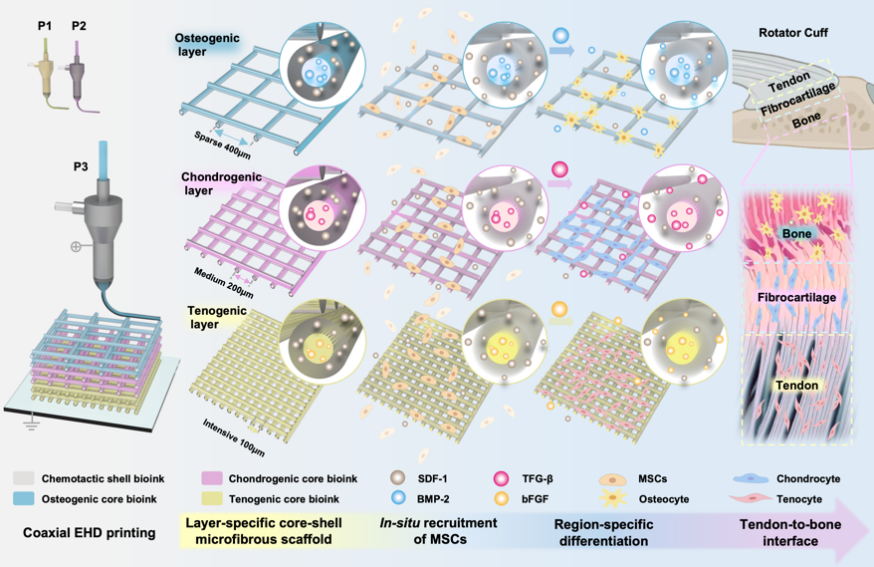Rotator cuff injury is a common sports injury, which severely affects daily life and work ability of the affected patients. Traditional treatment constantly requires long-term rehabilitation and yields high recurrence rate. Consequently, it is of significant clinical value to develop novel technologies that can promote natural healing and regeneration of rotator cuff. In the treatment of rotator cuff injury, how to effectively and accurately control the release of growth factors in the injured area to promote cell recruitment and differentiation is a huge challenge. In addition, it is necessary to ensure the biocompatibility and structural stability of the used materials for safe clinical application.

To resolve the above problems, Yin Zhanhai, Director of Department of Orthopedics of the First Affiliated Hospital (FAH) of Xi’an Jiaotong University (XJTU), published an original article entitled "Coaxial electrohydrodynamic printing of core-shell microfibrous scaffolds with layer-specific growth factors release for enthesis regeneration" in International Journal of Extreme Manufacturing (IF:14.7). This study was jointly completed by Bai Lang, an excellent youth talent from Department of Orthopedics of FAH, Xu Meiguang, a doctoral student, and Meng Zijie, an assistant researcher from School of Mechanical Engineering of XITU. Professor Yin Zhanhai and Professor He Jiankang, an outstanding young talent and Deputy Director of School of Mechanical Engineering of XITU, served as co-corresponding authors.

Based upon previous research, this study further deepened the application of bio-printing technology in the field of rotator cuff repair. The team specially designed and developed the technology of "coaxial electrohydrodynamic printing of core-shell microfibrous scaffolds" for rotator cuff regeneration. Through precise release of layer-specific growth factors, this technology can specifically place different growth factors in the microfibrous scaffolds to guide the recruitment and differentiation of cells in vivo and promote natural healing and regeneration of rotator cuff. The effectiveness of this method has been verified in the experiment, showing the potential in promoting cell proliferation and migration.

In addition, the biocompatibility and structural stability of the microfibrous scaffolds were also explicitly evaluated to ensure its safety and effectiveness in clinical application.

This achievement provides a novel therapeutic option for the repair of rotator cuff injury.
Article link: https://iopscience.iop.org/article/10.1088/2631-7990/ad5806